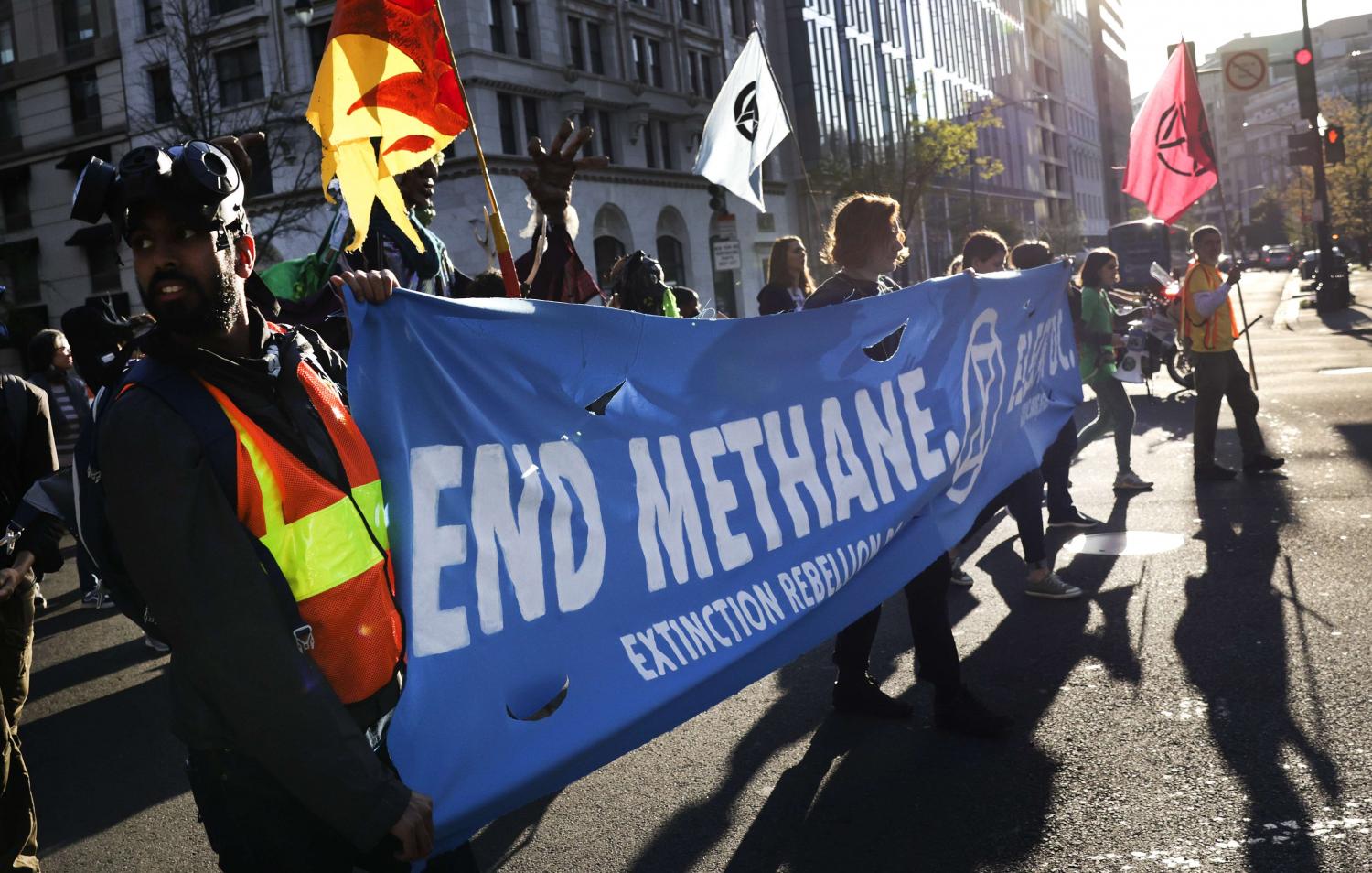
One of the most important achievements of last year's United Nations Climate Change Conference (COP26) in Glasgow was the Global Methane Pledge, a commitment by more than 100 countries to cut methane emissions by 30% by 2030. Reducing methane emissions is not only among the quickest and most effective ways to stem climate change; it would also go a long way towards improving public health.
A highly potent greenhouse gas, methane traps over 80 times more heat in the atmosphere than carbon dioxide does, and methane emissions account for roughly a quarter of current global warming. They thus bear significant responsibility for climate-related threats like more intense and frequent extreme weather events, increased food insecurity, greater infectious-disease risk, reduced access to clean water, and deteriorating air quality.
Beyond undermining public health by exacerbating climate change, methane (and co-emitted pollutants) damages public health, by contributing to ground-level ozone and particulate pollution.
Exposure to such pollution damages airways, aggravates lung diseases, causes asthma attacks, increases rates of cardiovascular morbidity and mortality, and boosts stroke risk. The consequences include lost productivity, higher medical costs, and greater pressure on health systems, owing to the increase in emergency-room visits and hospitalisations. By suppressing crop growth, ozone can also exacerbate food insecurity.
The good news is that, unlike CO², methane doesn't linger in the atmosphere, so the effects of reducing emissions would be felt quickly. And the Global Methane Pledge is clearly a step in the right direction. But, to keep the goal of limiting warming to 1.5C within reach and improve public health, the world must take even more ambitious action. Cutting methane emissions by 45% by 2030 would reduce warming by 0.3C by 2040.
To accelerate progress, major philanthropies have come together to create the Global Methane Hub, which launched last year with nearly US$330 million (11.3 billion baht) in philanthropic commitments. Already, the Hub has announced that it will allocate $10 million to the Climate and Clean Air Coalition to assist 30 countries in developing plans to reduce their methane emissions. The Hub has also joined the Agriculture Innovation Mission for Climate to support "innovation sprints" to mitigate methane emissions.
The Hub will aim to catalyse progress in all major methane-emitting sectors -- livestock (which accounts for about 30% of the global total), oil and gas (which produce around 25%), and landfills (15%) -- including by supporting NGOs and grassroots organisations. While it aims to lay the groundwork for long-term transformation in challenging sectors, the Hub will also emphasise achieving deep reductions quickly.
Consider the oil and gas sector, where the International Energy Agency estimates that methane emissions can be halved almost immediately through the wider adoption of practices already required in many countries, such as the replacement of valves and pumps with more efficient versions. According to the IEA, with additional available measures, it is technically possible to slash methane emissions from global oil and gas operations by up to three-quarters.
We have the technologies to prevent vented and fugitive emissions, and our capacity to identify methane leaks -- and thus to grasp the scale of toxic emissions -- has improved significantly. By taking full advantage of such tools, and targeting super emitters, policymakers can advance climate action while delivering enormous health benefits to communities living near oil and gas operations.
In places as different from each other as southern Iraq, Chiapas, Mexico, and West Texas, communities have raised concerns about the health effects of nearby oil and gas activities, such as acute respiratory symptoms and cancer. A growing body of evidence documents elevated rates of asthma and poorer birth outcomes, including low birth weight and preterm birth among communities living in close proximity to oil and gas wells, from which methane is co-emitted with hazardous air pollutants.
Cutting methane emissions from oil and gas infrastructure is only the first step. Recent studies have also highlighted the threat posed by gas-fuelled stoves and water heaters, which leak methane and contribute to air pollution. Policymakers must expand renewable-energy capacity and electrification.
Further opportunities to reduce methane emissions lie in agriculture and waste management. Providing higher-quality feed to livestock can reduce enteric methane emissions. Capturing methane from manure, and treating digestate to minimise ammonia emissions (precursors of particulate matter), would provide a local source of energy, reduce odours, and mitigate public-health risks. Practices like composting can avert methane from organic wastes and generate valuable resources to improve soil quality.
The case for immediately slashing methane emissions is strong, and the Global Methane Pledge is growing global awareness of such efforts' importance to combating climate change. But translating commitments into real progress will not be easy.
That is why it is crucial to highlight the health benefits of cutting emissions. With the help of researchers and community-health practitioners who understand the issue best, our aim should be to generate the support and investment to cut methane emissions and improve public health. ©2022 Project Syndicate
Sarah Vogel is Senior Vice President of Health at the Environmental Defense Fund. Marcelo Mena, CEO of Global Methane Hub, is a former Chilean minister of the environment.